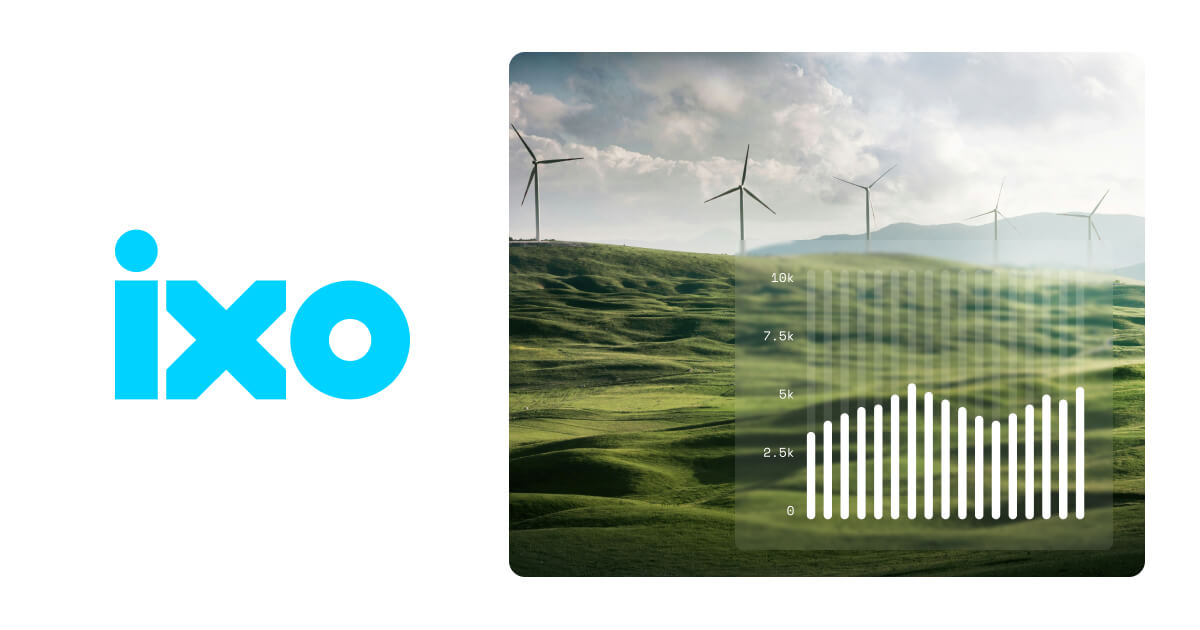
I trained as an architect before moving into product design, so I make sense of things through structure rather than code. Domains are no different. When the structure is clear, the system becomes understandable.
So what are we building with Qi?
It’s not an app.
It’s an open-source ecosystem.
We're building Qi in public. Want early access? Join us here: qi.space
Building an ecosystem is very different from building a single app. A modular ecosystem needs to work for any imaginable use case, so the user experience has to stay consistent, even while the context changes.
What is an IXO domain?
The easiest comparison is a website domain. When you enter a website domain in your browser, the browser fetches data from a server and shows you a site or web app - and whatever actions you can perform there.
A website can represent anything: a personal page, a shop, a blog, an organisational site… but the interaction model is fixed.
IXO domains are similar in the sense that they can represent almost anything - organisations, people, real-world assets - essentially whatever you want to define. But the way data is structured in domains is very different from the randomness and inconsistency of the web.
Instead of the web’s inconsistency, IXO domains follow a shared data ontology - a structure that supports inheritance, interaction, and ownership. Data stays structured, readable, and correlatable. Think of it as an ever-branching tree:
- The trunk (the protocol level) defines the core properties a domain should have - for example, what data a real-world-asset domain must include.
- Thick branches define more specific categories - like electric vehicles - adding additional required data.
- Smaller branches define individual types - the specific model of car - with their own properties plus everything inherited from above.
If you’re creating a domain type that doesn’t exist yet, you just find the closest branch and extend it. And because everything is connected, if experts discover that all electric cars need a new data field, the “electric car” branch gets updated, and every domain type branching from it inherits that update automatically. This keeps data consistent, interoperable, and reduces noise.
What can IXO domains contain?
Pretty much anything:
- Properties and attributes
- Documents and files
- Protocols
- Accounts storing value (crypto tokens)
- Permissions, rights, allowances
- Social elements like chatrooms and user interactions
All of this is stored in a decentralised way. We don’t own or see your data. It’s not stored centrally. Blockchain accounts, combined with a decentralised event-storage system (Matrix protocol), keep data private and secure within the domain itself.

How do you design UX for something so open?
It’s a bit like navigating workspaces in tools we already use - Slack, Discord, Notion. Each workspace structures information differently, depending on who created it. IXO domains work in a similar way.
Every domain can choose what’s public and what’s private. And users can do a few core things within any domain:
1. Browse content
s is like roaming a Notion workspace - exploring documents and files. Some things you can access, some you can’t; it’s the domain’s content library.
2. Collaborate
Domains can enable chat, group decision-making, shared editing, and other social interactions.
3. Store and manage value
Every domain has an account, so it can hold tokens. It can also own other domains - but that’s a rabbit hole for another day.
4. Use flows
Flows are blueprints for getting things done.
Using the electric car example: a flow might help the owners claim carbon credits from usage, or submit a form for a mobility subsidy. Flows can exist at any level of the “tree”, and participants can interact with them individually or together.
And now the fun part: AI agents
AI agents can participate in domains just like users. They can chat, carry out flow tasks, make decisions - all within whatever permissions you give them.
Because all data stays inside the domain and follows a structured ontology, AI can interact with it predictably. It can generate charts, tables, pages, dashboards, or filtered views on the fly - without anything needing to be pre-designed. This opens up a new way of working with complex systems.

Where this is all going
As the ecosystem grows, and more domains start interacting, we’ll discover better ways to navigate all of this. We’re learning as we build.
And here’s the best part:
If you don’t like the way we’re doing it - that's okay, it’s all open source. Which means you can build your own UX, your own navigation model, your own way of interacting with domains. From fully AI-driven interfaces to highly specific manual setups - whatever works for your use case. You log in, and everything you participate in is already there.
That’s the beauty of decentralised open-source systems.
Build it with Qi:
Qi is for anyone building or funding something that involves people and AI working together:
- Founders use it to plan and prove progress.
- Investors use it to track outcomes with evidence.
- Developers use it to orchestrate agent workflows that are verifiable and secure.





